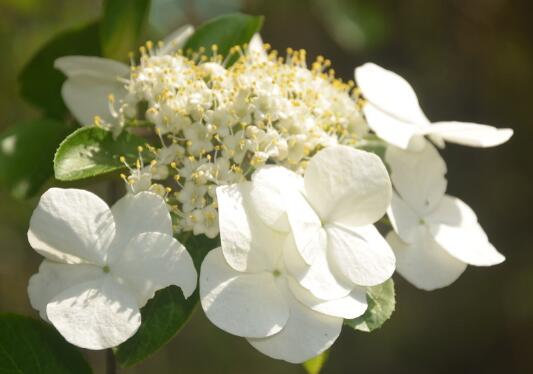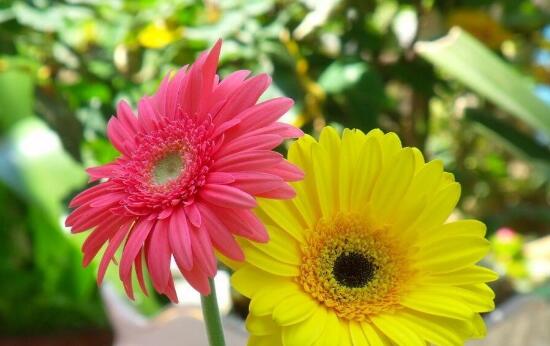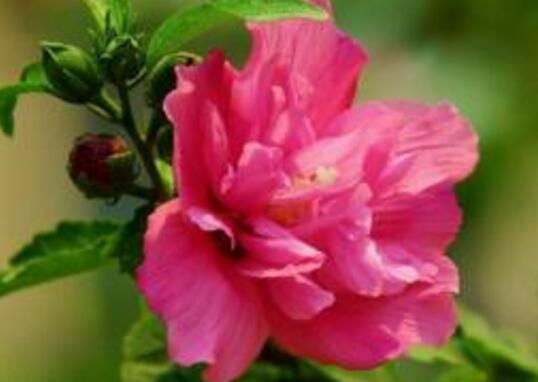How to raise Qionghua, the breeding methods and precautions / sufficient sunshine of Qionghua
Qionghua is not only a kind of famous flower peculiar to our country, but also the city flower of Yangzhou City, Jiangsu Province. It has the reputation of "only one flower, no similar in the four seas". There are many people who breed it in Yangzhou area, but there are many places that need to be paid attention to. How to raise Qionghua? What are the breeding methods and matters needing attention of Qionghua? Next, the editor will take you to learn about it.
First, how to raise Qionghua

About how to raise Qionghua, first of all, we need to understand its growth habits. Qionghua is a kind of light-loving plant, so it is necessary to maintain sufficient light in the process of culture. in addition, watering, fertilization and other aspects also need to pay attention to. Details in the following Qionghua culture methods and matters needing attention, we continue to look down.
II. Culture methods and matters needing attention of Qionghua
1. Soil selection
When we cultivate Qionghua, the first step is to choose soil, which is a good foundation, so it is very important to choose sandy soil with high looseness, which has good drainage and air permeability. it can make Qionghua absorb nutrients better.
two。 Fertilization management
In the process of growing, Qionghua has a high demand for fertilizer, which is one of the main nutrients in its growth process, which basically needs to be fertilized once a month, which can make Qionghua grow more healthily. this shows the importance of fertilization in Qionghua's breeding methods and matters needing attention.
3. Watering management
Qionghua likes a warm and humid environment, so it must be watered frequently in the process of breeding, but attention should be paid to watering thoroughly, but not too much, otherwise stagnant water can easily lead to root rot.
4. Light management
In the Qionghua culture methods and matters needing attention, light is a very important point. Qionghua is a kind of light-loving plant, so we must maintain sufficient light in the process of breeding, but we still need to pay attention to shading when the sunshine is too strong, especially in summer. Shade is still needed.
5. Pest control
In the process of breeding Qionghua, it is easy to have diseases and insect pests and other problems if not maintained properly, this kind of problems do great harm to Qionghua, and it is easy to lead to plant wilt and death if not dealt with in time. In view of the ways to deal with this kind of problems, you can refer to Qionghua's article on pest control, in which there is detailed teaching, which you can understand.
Culture methods and points for attention of Cymbidium grandiflorum
Cymbidium, also known as Cymbidium, with tall and straight stems, large flowers, dignified shape and magnificent momentum, is favored by people. How do you raise Cymbidium? What do you need to pay attention to in the breeding process? Let's take a look at the breeding methods and points for attention of Cymbidium.
Cymbidium pictures
I. Culture methods of Cymbidium
The main results are as follows: 1. The selection of cultivation substrate and basin: the long barrel basin with porous bottom and four walls should be selected, the bark block or fern root with good air permeability and water permeability should be selected, and charcoal and ceramsite should be added in the lower part of the basin to facilitate drainage.
2. Fertilization and watering: it is not suitable to water immediately after ramet planting. If it is found to be dry, water can be sprayed to the leaf surface and basin surface to prevent the leaves from drying up, falling off and pseudo-bulbs from shrinking. Wait for new buds and roots to grow before watering. Watering in cultivation should depend on the weather and vibration. It depends on the wet and dry conditions. Adequate water should be supplied to the ministry during the vigorous growth period, and timely watering should be needed in the dry and hot seasons. When the temperature is low in winter, the watering times can be reduced. The pH of watering water should be 6.5. Cymbidium prefers fertilizer, and compound fertilizer with a concentration of 0.1% Mel 0.2% nitrogen fertilizer should be applied once a week after new buds grow in spring. Or rotten thin cake fat and water. In the bud stage, the available phosphorus and potassium fertilizer should be applied in advance.
3. Lighting and ventilation: avoid direct sunlight, need sufficient scattered light, and shade about 50% under strong summer light. There can be a little more sunshine in autumn-conducive to flower bud formation and overwintering. In winter, greenhouse light can be placed in areas with strong sunshine and high temperature in the south of China, which should be cultivated in the shade all the year round. In order to facilitate ventilation, overhead placement should not be too dense.
4. Temperature and humidity: 25 ℃: during the day, 10 ℃ at night. If the temperature at night is higher than 20 ℃, it will wither the buds or affect flowering. The winter temperature should not be lower than 5 ℃, but it should not be higher than 15 °C, otherwise the flower bud will suddenly elongate. In addition, in summer and when the climate is dry, we should often spray water to the leaves and the ground and shelves. At the same time, attention should be paid to the prevention and control of various diseases and insect pests.
Cymbidium pictures
2. Matters needing attention in Cymbidium culture
1. Fertilization: the content of fertilizer components in the growth period and catalytic period of Cymbidium is different, so it can not be generalized. In the growing period, it is necessary to apply a mixture of nitrogen, phosphorus and potassium, while in the catalytic period, it is necessary to appropriately increase the content of phosphorus and potassium, usually at 1:2:2. Fertilizers should also be strictly controlled by PH, which is generally between 5.8 and 6.2. If the object of fertilization is small seedlings, the concentration of fertilizer should be controlled at 3500 to 4000 times, while for medium and large seedlings, the concentration should be reduced to about 2000,500 times. Except for summer, fertilizer is usually applied every three days. High temperature in summer can be maintained twice a month.
2. Organic fertilizer: if the plant is in the tissue culture period, it should be applied once a month, which is composed of bean cake and bone meal at the ratio of 2:1 during the growing period.
3. Watering: watering and fertilization are generally used alternately. In May and September, they are usually watered once a day. The high temperature in summer is twice a day from July to August. After entering the autumn to enter the flowering period, keep watering every 2 murals every 3 days.
Cymbidium pictures
The above is the breeding methods and points for attention of Cymbidium. After reading it, there must be no doubt about how to raise Cymbidium. You might as well try a pot at home.
Recommended reading:
Notes on how to raise ① Milan Flowers
② Magnolia how to raise Magnolia
Culture methods and points for attention of ③ Qionghua
Culture methods and breeding skills of ④ how to raise Lingxiao Flower
How to raise albizzia acacia in ⑤
The cultivation methods and matters needing attention of Hydrangea should be loose, fertile and well-drained sandy loam, the suitable temperature for growth should be 18-28 ℃, the basin soil should be kept moist, but the watering should not be too much, usually the cultivation should avoid the hot sun, the flowering period is from June to July, fertilizing once every semimonthly, the flower stem should be removed after flowering, the indoor in the first and middle of October should be paid attention to, and watering should be controlled. In the growing period, it can be topped twice to promote branching. Many people like hydrangea very much, rich in color, pleasing to the eye, with high ornamental value, the following will introduce the breeding methods and matters needing attention of hydrangea. Soil Hydrangea cultivation soil with loose, fertile and well-drained sandy loam is better. However, the flower color is affected by soil acidity and alkalinity, acidic soil flowers are blue and alkaline soil flowers are red. 2. The optimum temperature for the growth of Hydrangea is 18-28 ℃, and the winter temperature is not lower than 5 ℃. Flower bud differentiation takes 6-8 weeks under the condition of 5-7 ℃. The temperature of 20 ℃ can promote flowering, maintain 16 ℃ after anthesis, prolong the viewing period, and pay attention to the rapid discoloration of flowers caused by high temperature. 3. The basin soil planted with hydrangea should be kept moist, but it should not be watered too much, especially in the rainy season to prevent rotting roots caused by waterlogging. It is better to dry indoor potted plants in winter. If it is too wet, the leaves will rot easily. 4. Hydrangea is a short-day plant, usually cultivated to avoid the hot sun, 60% to 70% shade is the most ideal. When the light is too strong in midsummer, proper shading can prolong the flowering period. 5. The florescence of Hydrangea mandshurica is from June to July, and the fertilizer and water should be sufficient during the flowering period. 6, pruning hydrangea after flowering, we should pay attention to remove the flower stem, promote the production of new branches, proper pruning, can keep the plant shape beautiful. 7. pest Hydrangea mainly includes wilt disease, powdery mildew disease and leaf spot disease. Spray control with 65% Dysen zinc wettable powder 600 times solution. Insect pests are harmful to aphids and bug bugs and can be sprayed with 1500 times of omethoate EC. Matters needing attention in the culture of Hydrangea (1) Hydrangea prefers acid soil and is not resistant to barren and saline-alkali soil. In alkaline soil, the growth is poor and the branches and leaves are yellow. it is suitable for the acid soil which is loose, fertile and rich in humus. Its flower color can change from white to red and from red to cyan due to the influence of pH. (2) when moving into the room in the first and middle of October, it is necessary to control watering and keep the room temperature at about 5 ℃ to promote its dormancy. Remove the leaves before entering the room to avoid rotten leaves. From the middle of December, it moved to the sunny place, keeping the temperature 15: 20 ℃, promoting the growth of branches and leaves, and leaving the chamber in late April of the following year. (3) in the annual growth period, it can be topped twice to promote branching. After flowering, the old branches were kept lumb2 nodes and cut short to control the plant height and promote the growth of new branches. Cut off the top of the new shoots after autumn to stop the branches from growing so as to survive the winter. (4) the seedlings cut in March can be moved into a 10 cm basin after rooting, and then planted in a 16 cm basin in the middle of June. The heart was picked for the first time in June. If the heart is plucked in early June, flower buds can be formed in the middle of August. The seedlings cut from May to June can be planted in 16 cm pots from July to August. In order to promote the formation of flower buds in that year, the last heart picking must be before September, otherwise the flower buds can not be formed in the same year. Finally, let's take a look at the breeding method of hydrangea. Cuttings, ramets, striping and grafting are commonly used for propagation, mainly cuttings. During the Meiyu period, strong twigs on young mother trees can be selected as cuttings, with nodes at the base of cuttings, stained with mud, about 20 cm long, and the lower leaves can be removed. The suitable temperature of cutting is 13-18 ℃, shade is needed after cutting, it is often kept moist, rooting takes place in about 15 days to 1 month, and it can be transplanted in the second year after survival. Ramet propagation should be carried out before sprouting in early spring. Separate the rooted branches from the mother plant, pot directly, watering should not be too much, maintain in the semi-shady place, wait for new buds to sprout and then transfer to normal maintenance. Striping propagation can be carried out during bud germination, grow after 30 days, cut off from the mother plant in the following spring, transplant with soil, and blossom in the same year. In general, high pressure is carried out from March to April in spring, and it can take root from June to July, and it can be cut and planted in the same year. Grafting propagation uses Qionghua seedlings as rootstocks, cutting in spring, easy to survive. Transplanting should be carried out after defoliation or before budding. The main branch is easy to sprout and grow, and it needs to be pruned properly after flowering to shape the tree. Hydrangea does not like the sun, is shady flowers and trees, can be potted planted in the hall, study and other indoor viewing, hydrangea breeding methods and matters needing attention and other contents to share with you here.
- Prev

How to fertilize African chrysanthemum, fertilization method of African chrysanthemum / once a week in spring
African chrysanthemum, also known as Fulang flower, sunflower, it has beautiful flowers, rich colors, red, white, yellow, orange, purple and so on, has a high appreciation value. However, although African chrysanthemum is easy to raise, it takes a lot of work to raise it well, such as proper fertilization, how to apply fertilizer to African chrysanthemum? What kind of fertilizer should be applied
- Next

How to raise hibiscus flowers, breeding methods and precautions of hibiscus flowers / water and fertilizer should not be excessive
We know that in the efficacy and function of hibiscus flower, it not only has high nutritional value, but also can treat many diseases, so there are many people who grow it, so how can hibiscus flower grow better? Let's take a look at the culture methods and matters needing attention of hibiscus flowers.
Related
- Fuxing push coffee new agricultural production and marketing class: lack of small-scale processing plants
- Jujube rice field leisure farm deep ploughing Yilan for five years to create a space for organic food and play
- Nongyu Farm-A trial of organic papaya for brave women with advanced technology
- Four points for attention in the prevention and control of diseases and insect pests of edible fungi
- How to add nutrient solution to Edible Fungi
- Is there any good way to control edible fungus mites?
- Open Inoculation Technology of Edible Fungi
- Is there any clever way to use fertilizer for edible fungus in winter?
- What agents are used to kill the pathogens of edible fungi in the mushroom shed?
- Rapid drying of Edible Fungi

